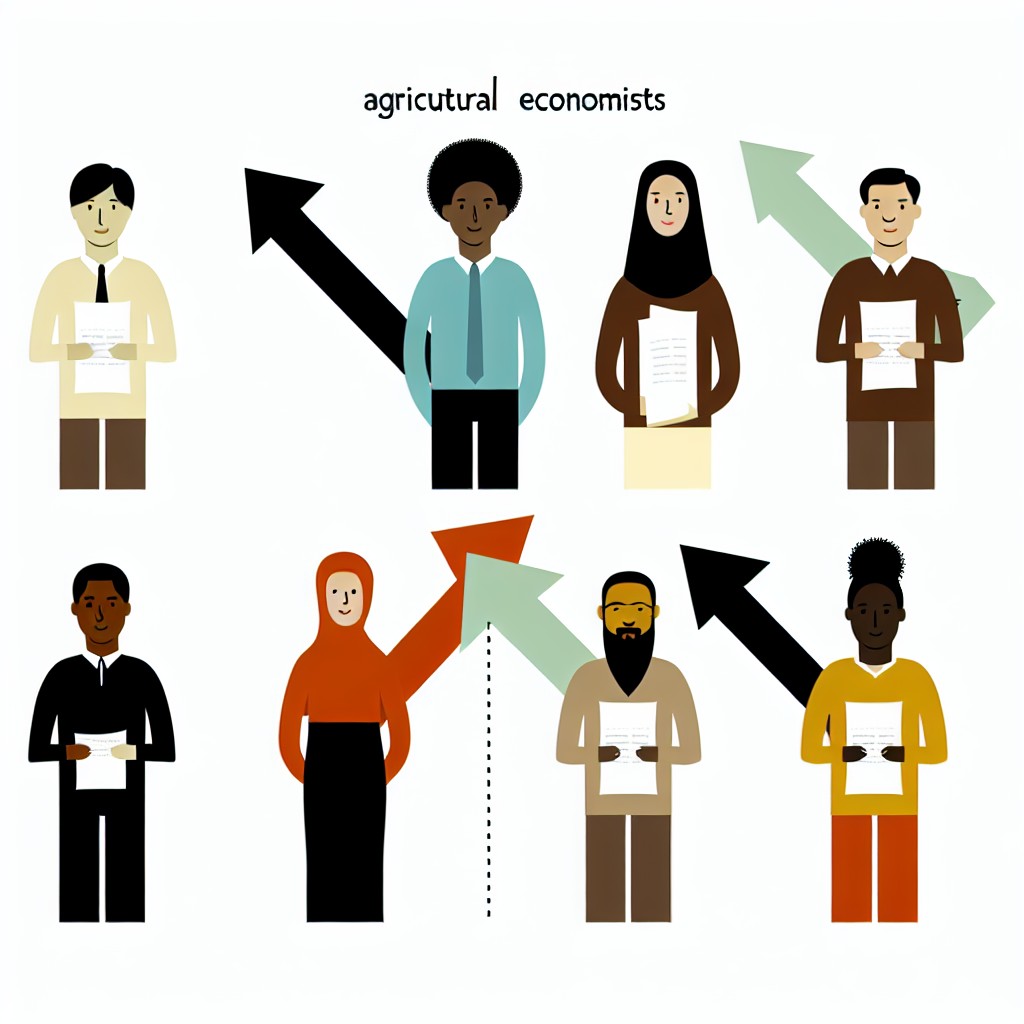Introduction
Agricultural Economics Defined:
Agricultural economics studies the production of goods and services related to agriculture.
It also covers the distribution and consumption of these goods and services.
Key Theories and Concepts:
Key theories include supply and demand and price elasticity.
Production efficiency and market structures are also important topics.
Risk analysis is another essential concept in agricultural economics.
The Law of Supply and Demand
One of the fundamental principles in agricultural economics is the law of supply and demand.
Explanation of how the law of supply and demand applies to agriculture
- In agriculture, the law of supply and demand determines the prices of agricultural products.
- When supply is high and demand is low, prices tend to decrease.
- Conversely, when supply is low and demand is high, prices tend to increase.
- This relationship helps to balance the market and allocate resources efficiently.
Effects of changes in demand and supply on agricultural markets
- Fluctuations in demand and supply can have significant impacts on agricultural markets.
- If there is an increase in demand for a particular agricultural product, prices are likely to rise.
- Conversely, a decrease in demand can lead to price decreases, affecting farmers’ profitability.
- Changes in supply, such as a bumper crop or a drought, can also influence market prices.
- Agricultural producers must adapt to changes in supply and demand to remain competitive in the market.
Overview of Production Functions in Agriculture
Production functions in agriculture explain the relationship between inputs and outputs.
The inputs include land, labor, and capital.
The outputs are crops and livestock.
The Cobb-Douglas production function is the most common in agriculture.
This function assumes a linear relationship between inputs and outputs.
The production function is typically expressed as Q = f(L, K).
Here, Q represents output quantity.
L represents the quantity of labor.
K represents the quantity of capital.
Factors Influencing Agricultural Production Decisions
Agricultural producers consider multiple factors when making production decisions.
These factors include input prices, technology, government policies, and market conditions.
Input prices for seeds, fertilizers, and pesticides are crucial in decision-making.
Transform Your Career Today
Unlock a personalized career strategy that drives real results. Get tailored advice and a roadmap designed just for you.
Start NowTechnological advancements significantly impact agricultural production.
Examples include genetically modified crops and precision agriculture techniques.
Government policies affect production decisions through subsidies, tariffs, and regulations.
These policies influence input costs and market access.
Market conditions shape production choices based on demand, output prices, and competition.
Importance of Understanding Production Functions and Decision Factors
Understanding production functions is essential for agricultural economists.
This knowledge helps analyze and improve both efficiency and profitability.
Learn More: Pest Control Advisor: Environmental Considerations
Types of Market Structures in Agricultural Economics
Perfect Competition
Many buyers and sellers participate in the market.
The products offered are homogeneous.
There are no barriers to entry for new firms.
Farmers may struggle to make profits due to price competition.
Consumers benefit from lower prices and a variety of products.
Monopoly
One seller controls the entire market.
The product offered is unique.
High barriers prevent new firms from entering.
Farmers may face lower prices and limited choices.
Consumers may experience higher prices and lack competition.
Oligopoly
Few large firms dominate the market.
The products are differentiated among sellers.
Transform Your Career Today
Unlock a personalized career strategy that drives real results. Get tailored advice and a roadmap designed just for you.
Start NowFarmers may have limited bargaining power and face price fixing.
Consumers may benefit from choices but could face higher prices.
Monopolistic Competition
Many sellers offer differentiated products.
There are low barriers to entry in the market.
Farmers can differentiate their products but face price competition.
Consumers benefit from variety and may pay slightly higher prices.
Implications of Different Market Structures on Farmers and Consumers
In perfect competition, farmers struggle to make profits.
Consumers benefit from lower prices and variety.
Effects of Monopoly
Farmers face lower prices and have limited choices.
Consumers experience higher prices and lack of competition.
Effects of Oligopoly
Farmers have limited bargaining power and confront price fixing.
Consumers benefit from choices but may pay higher prices.
Effects of Monopolistic Competition
Farmers can differentiate products but still face price competition.
Consumers enjoy variety but may pay slightly higher prices.
Uncover the Details: Professional Associations for Rangeland Managers
Definition of Risk and Uncertainty in Agricultural Economics
Risk in agricultural economics refers to the probability of experiencing a loss in production or sale of agricultural products.
It is a fundamental concept in decision-making for farmers and policymakers.
Uncertainty refers to a lack of knowledge or information about future events that could impact agricultural outcomes.
It adds complexity to decision-making processes and can lead to increased risks.
Both risk and uncertainty are inherent in the agricultural sector due to factors such as weather conditions, market fluctuations, policy changes, and technological developments.
Transform Your Career Today
Unlock a personalized career strategy that drives real results. Get tailored advice and a roadmap designed just for you.
Start NowStrategies for Managing Risk in Agriculture
- Diversification involves producing a variety of crops or raising multiple types of livestock.
- By diversifying their agricultural activities, farmers can reduce the impact of potential losses from one specific product.
- Insurance provides financial protection to farmers against losses caused by unpredictable events such as natural disasters, pests, and diseases.
- Farmers can purchase crop insurance, livestock insurance, or revenue insurance to safeguard their investments.
- Hedging is a financial strategy that helps farmers minimize the risk of price fluctuations in agricultural markets.
- Farmers can use futures contracts or options to lock in prices for their products, ensuring a stable income regardless of market volatility.
- Building savings and reserves is essential for managing risk in agriculture.
- By setting aside funds during profitable years, farmers create a financial cushion to withstand losses during challenging times.
- Savings can be used to cover production costs, repay debts, or invest in new technologies.
- Conducting risk assessments is crucial for understanding and managing risks in agriculture.
- Farmers can analyze their production systems, market conditions, and external factors to identify potential risks.
- Risk assessment tools such as crop budgeting, financial analysis, and scenario planning help farmers make informed decisions.
- Adopting modern technologies and practices can help farmers mitigate risks in agriculture.
- Precision farming, drone technology, weather forecasting tools, and genetic engineering improve productivity.
- These technologies reduce losses and increase resilience to environmental challenges.
- Staying informed about market trends, consumer preferences, and trade policies is essential for managing risks.
- Farmers use market intelligence tools to monitor prices, demand-supply dynamics, and competitive forces in agriculture.
- By staying ahead of market developments, farmers adjust their production and marketing strategies to minimize risks.
Managing Risk and Uncertainty for Sustainable Agricultural Growth
Risk and uncertainty are integral aspects of agricultural economics that require careful consideration and proactive management.
Implementing strategies such as diversification, insurance, hedging, savings, risk assessment, technology adoption, and market intelligence helps farmers navigate uncertainties.
These approaches enable optimization of agricultural operations for sustainable growth and profitability.
Learn More: Role of Environmental Scientists in Pest Management
Agricultural policy plays a crucial role in shaping the agricultural sector.
It influences market dynamics extensively.
Agricultural Policy and Government Intervention
Government policies include subsidies, tariffs, and quotas.
These policies affect the supply and demand of agricultural products.
Role of Subsidies
Subsidies reduce production costs for farmers.
They increase farmers’ competitiveness in the market.
Impact of Tariffs
Tariffs on imports protect domestic farmers from foreign competition.
However, tariffs can result in higher prices for consumers.
Quotas in Agricultural Trade
Quotas limit the quantity of agricultural imports allowed.
This controls market supply and supports local producers.
Examples of Key Agricultural Policies
Various global policies demonstrate diverse impacts on agriculture.
EU Common Agricultural Policy (CAP)
The CAP supports farm incomes and food security in the EU.
It also promotes sustainable agriculture practices.
United States Farm Bill
The Farm Bill provides commodity programs and crop insurance.
It also supports conservation and nutrition assistance programs.
Chinese Agricultural Subsidies
China uses subsidies to support its agricultural sector.
Transform Your Career Today
Unlock a personalized career strategy that drives real results. Get tailored advice and a roadmap designed just for you.
Start NowThese include price support and input subsidies for farmers.
Effects of Agricultural Policies on the Industry
Policies influence competitiveness, sustainability, and food security.
Market Distortions
Subsidies and tariffs can distort market prices.
This may lead to inefficiencies and trade conflicts among countries.
Environmental Sustainability
Sustainable policies reduce environmental degradation.
They help ensure long-term food security.
Income Inequality
Policies may affect income distribution among farmers.
This impact can widen the wealth gap within the industry.
Challenges Facing Agricultural Policy
Policies face issues such as trade disputes, consumer changes, and climate change.
Global Trade Tensions
Trade disputes over subsidies and tariffs hinder cooperation.
These tensions disrupt global food supply chains.
Changing Consumer Preferences
Consumers demand organic, local, and sustainable products.
Policymakers must adapt agricultural policies accordingly.
Adapting to Climate Change
Policies must address climate impacts on agriculture.
These include droughts, floods, and extreme weather events.
Role of Agricultural Policy in Economic Growth and Sustainability
Agricultural policy drives economic growth and food security.
It also promotes environmental sustainability in farming.
Government actions like subsidies, tariffs, and quotas influence markets.
Policymakers must balance trade tensions, consumer trends, and climate risks.
Sustainable and inclusive policies will shape the future of agriculture.
Transform Your Career Today
Unlock a personalized career strategy that drives real results. Get tailored advice and a roadmap designed just for you.
Start NowDelve into the Subject: How Quality Control Inspectors Ensure Food Quality

Input Markets
Importance of Input Markets in Agricultural Production
Input markets play a crucial role in ensuring the smooth functioning of agricultural production systems.
These markets provide farmers with the necessary resources such as seeds.
They also supply fertilizers, pesticides, machinery, and labor.
Without access to input markets, farmers would struggle to efficiently carry out their farming activities.
Input markets enable farmers to obtain high-quality inputs at competitive prices.
This access is essential for maximizing their productivity.
Efficient input markets contribute to the overall growth and sustainability of the agricultural sector.
By ensuring a steady supply of inputs, these markets support the smooth operation of the entire agricultural value chain.
Access to a variety of inputs allows farmers to diversify their production and adapt to changing market demands.
Input markets also promote innovation in agriculture by providing farmers with access to new and improved technologies.
Input markets are vital for ensuring the success and viability of agricultural production systems.
Factors Influencing Prices of Inputs in Agriculture
The prices of inputs in agriculture are influenced by a variety of factors.
These factors impact the supply and demand of the inputs.
One key factor is the availability of raw materials used in producing inputs such as fertilizers and seeds.
Fluctuations in prices of raw materials can directly affect the prices of inputs.
Market conditions, including competition among input suppliers, can influence input prices.
Changes in government policies, such as subsidies or tariffs on inputs, also have a significant impact on prices.
The level of demand for inputs is influenced by factors like crop prices and weather conditions.
Demand fluctuations can affect input prices as well.
Transform Your Career Today
Unlock a personalized career strategy that drives real results. Get tailored advice and a roadmap designed just for you.
Start NowExchange rates and global market trends play a role in determining the prices of imported inputs.
Technological advancements and changes in production methods impact the costs of inputs.
These changes ultimately affect input prices in agriculture.
Overall economic conditions, such as inflation and interest rates, influence input prices in the sector.
By understanding these factors, farmers and policymakers can make informed decisions.
They can optimize input prices and improve agricultural productivity in the long run.
International Trade
International trade plays a crucial role in agricultural economics.
It allows countries to specialize in goods where they have a comparative advantage.
- Significance of international trade in agricultural economics:
Exchange of goods and services between nations leads to increased efficiency in resource allocation.
International trade enables countries to access a wider variety of products unavailable domestically.
It promotes economic growth by fostering competition and innovation in agriculture.
- Effects of trade agreements and tariffs on agricultural markets:
Trade agreements such as the North American Free Trade Agreement (NAFTA) can lower barriers and create new markets.
Tariffs increase the cost of imported agricultural goods, reducing competitiveness in domestic markets.
Trade agreements increase export opportunities for farmers, resulting in higher incomes and improved living standards.
Tariffs protect domestic producers but may lead to higher prices for consumers.
The impact of trade agreements and tariffs varies based on the terms and imposed tariff levels.
Policymakers must carefully evaluate trade effects to balance economic growth and domestic producer protection.
International trade drives agricultural economics and understanding its market implications is vital for sustainability.
Sustainability
As we consider the importance of sustainable agriculture in modern economics, it becomes clear.
This approach is crucial for long-term viability.
Transform Your Career Today
Unlock a personalized career strategy that drives real results. Get tailored advice and a roadmap designed just for you.
Start NowSustainable practices benefit the environment.
Importance of sustainable agriculture in modern economics
- Ensures the preservation of natural resources for future generations.
- Reduces the negative impact of agriculture on the environment.
- Promotes biodiversity and ecosystem health.
- Enhances soil fertility and productivity over time.
- Contributes to food security by maintaining stable production levels.
Economic implications of sustainable practices in agriculture
- Lower input costs over the long run due to decreased reliance on synthetic inputs.
- Increased resilience to climate change and extreme weather events.
- Improved market access and consumer demand for sustainably produced goods.
- Enhanced rural livelihoods by promoting agroecological farming practices.
- Reduction in long-term environmental and social costs associated with unsustainable agriculture.
Sustainability in agriculture is not just a moral imperative.
It is also a sound economic strategy.
By embracing sustainable practices, farmers can ensure continued success of their operations.
They safeguard the health of the planet for future generations.
Key Concepts in Agricultural Economics and Their Impact
This post explores key theories and concepts in agricultural economics.
These concepts play a crucial role in understanding the dynamics of the agricultural sector.
From the law of supply and demand to economies of scale, these concepts provide a framework.
This framework helps analyze decision-making processes in agriculture.
Farmers benefit by improving efficiency, reducing costs, and maximizing profits.
Applying concepts like price elasticity of demand and production functions informs their choices.
They can decide what to produce, how much, and at what price to sell their products.
Policy makers also gain insights from agricultural economics.
Understanding market failures and externalities helps them design effective policies.
Policies can promote sustainable agriculture, food security, and economic development.
Consumers hold an important role in the agricultural economy.
Concepts such as consumer surplus and marginal utility guide their food choices.
By understanding price determination and market functions, they make choices aligned with preferences.
Theories and concepts in agricultural economics affect farmers, policymakers, and consumers alike.
Transform Your Career Today
Unlock a personalized career strategy that drives real results. Get tailored advice and a roadmap designed just for you.
Start NowUnderstanding these ideas helps stakeholders make informed decisions.
Ultimately, this leads to a more efficient, sustainable, and equitable agricultural system.
Additional Resources
Changing concepts of ‘land’ in economic theory: From single to multi …




